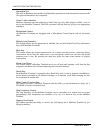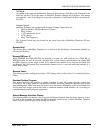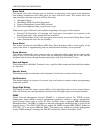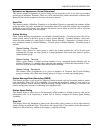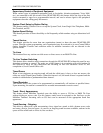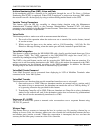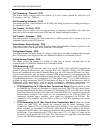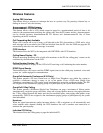
CHAPTER 5 FEATURE DESCRIPTION
Page 138 NEAX 2000 IPS General Description
NDA-24345, Issue 3
Call Forwarding - Override - CCIS
This feature allows a target station user (Station A) to call a station (Station B) which has Call
Forwarding – All Calls - CCIS set.
Call Processing Indication - CCIS
This feature provides visual indications of all CCIS calls being processed or waiting processing at
the Attendant Console.
Call Transfer - All Calls - CCIS
This feature allows a station user to transfer incoming or outgoing Central Office, intra-office and
inter-office calls to another station in the CCIS network, without Attendant assistance.
Call Transfer - Attendant – CCIS
This feature permits a station user, while connected to a CCIS network call, to transfer a call to an
Attendant Console via the CCIS network.
Called Station Status Display - CCIS
This service feature provides, on the LCD display of the calling Multiline Terminal, a display of the
called station status of the remote office within the CCIS network.
Calling Name Display - CCIS
This feature permits the station name of a calling or called party at another switching office, through
the CCIS network, to be displayed either on a Multiline Terminal or an Attendant Console.
Calling Number Display - CCIS
This feature permits the number of a calling or called party at another switching office to be
displayed either on a Multiline Terminal or an Attendant Console.
CCIS Networking via IP
This feature provides CCIS networks with Voice over IP (VoIP) or Peer-to-Peer IP capabilities to
provide a converged infrastructure over corporate Wide Area Networks (WAN). The IP Enabled
Dterm can communicate with other IP Enabled Dterm over the CCIS network (IP based) on a peer-
to-peer connection basis. And, the legacy terminals (TDM-based terminals) can communicate with
other legacy terminals or IP Enabled Dterm terminals over the CCIS network, via IP-PAD (IP Packet
Assembler/Disassembler). Voice compression of G.729a (8Kbps) and G.723.1 (5.3Kbps/6.3Kbps) is
available for those connections. The CCIS Networking via Peer-to- Peer IP provides users with all
TDM-based CCIS functionality, such as feature transparency, centralized management, and
centralized facilities. There are two types of connections available for CCIS Networking via IP:
• CCIS Networking via IP (Peer-to-Peer Connections Basis) When the distant systems
are 2000 IPS, the systems are connected on a peer-to-peer basis. The CCIS call control signals
are transmitted between the built-in IP trunks (CCIS Handler; CCH) on the MP card, over the
Local Area Networks and Wide Area Networks (LAN and WAN). For connections between IP
Enabled Dterm terminals, voice signals are also transmitted over the LAN and WAN. For
connections between legacy terminals, voice signals are transmitted via IP-PADs. This
connection is also available when the distant systems are 2400 IPX supporting peer-to-peer
connections.
• CCIS Networking via IP (Non Peer-to-Peer Connections Basis) When the distant
systems are 2000 IVS2, the systems are connected with IP trunks [including Voice
Compression Trunks (VCT)], via Time Division Switch (TDSW). Voice signals of IP Enabled
Dterm terminals are transmitted via IP-PADs, while those of legacy terminals are directly
connected to the IP trunks. Call control signals between the systems are also transmitted over
the IP trunks. Voice compression of G.729a (8 kbps) and G.723.1 (5.3 kbps / 6.3 kbps) can be
provided by the IP trunks with VCT cards. This connection is also applicable when the distant
systems are 2400 IPX not supporting peer-to-peer connections.



